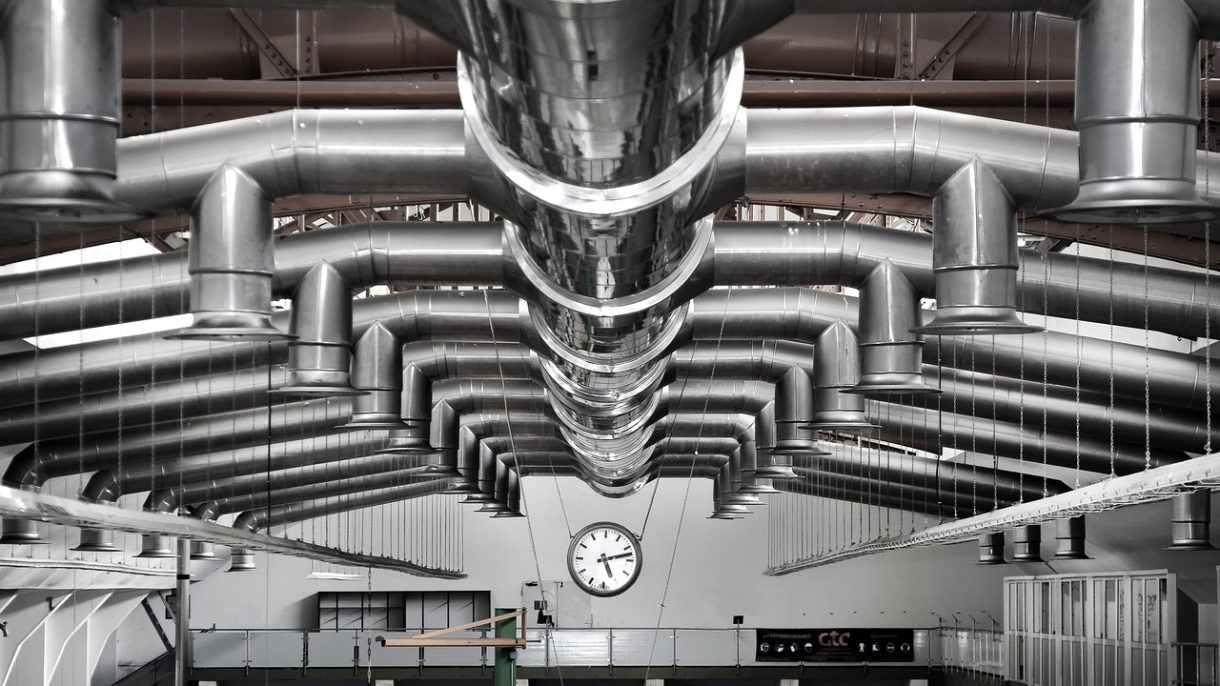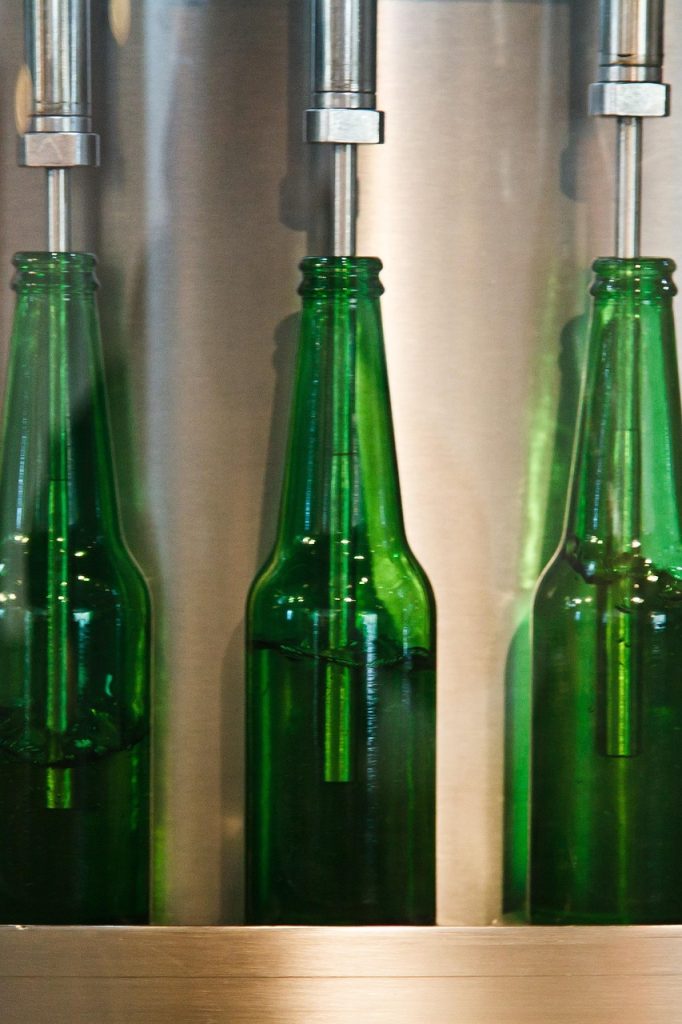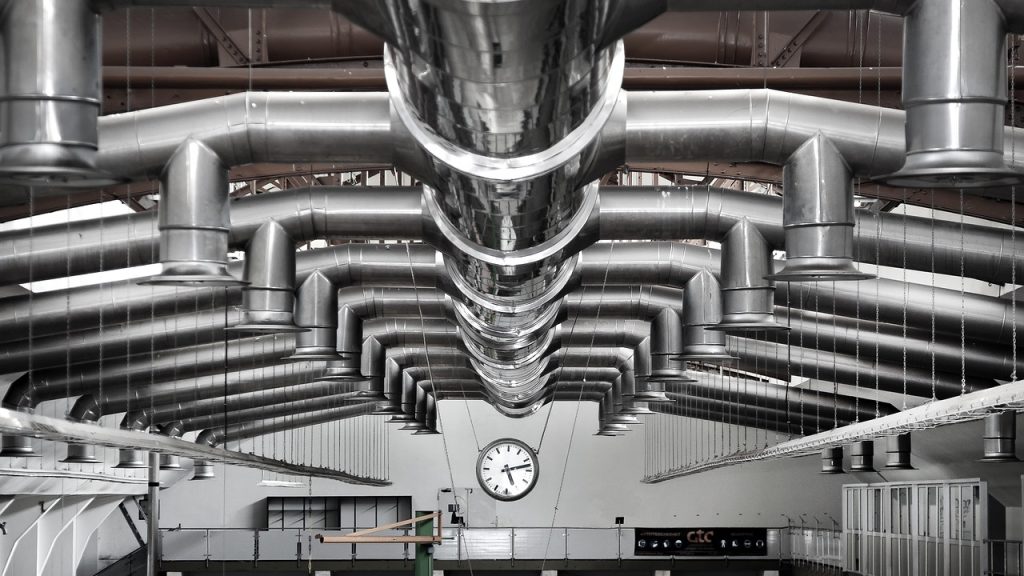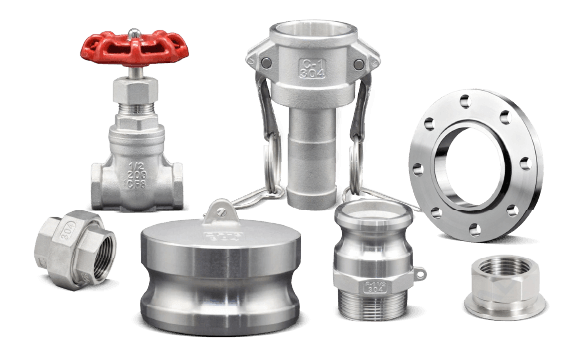


Image by Mark Lee from Pixabay
You know that feeling when a drink tastes good? Now, picture it tasting metallic or sour. In food and beverage processing, avoiding this is what strict safety and cleanliness rules are all about.
While big machines get all the attention, it's the smaller parts working in the background that keep things running. An example is the stainless steel pipe fittings.
It might look like a basic connector, but it plays an important role in supporting hygienic flow and reducing the risk of contamination.
But how exactly do they do all that? Let's find out below.
The simplest definition is: pipe fittings made from stainless steel. They link pipes together or help change their direction. They typically include:
But in food processing, it’s not just about plumbing or structure; the fittings need to be sanitary by design. It means:
This clean design helps processors meet strict hygiene standards without slowing down production.

Image by Bakhrom Tursunov from Pixabay
Stainless steel is widely preferred in food-grade fittings because:
If you are not sure if stainless steel is the better choice, here’s a quick comparison with aluminum camlock fittings to help you decide.
In food and beverage production, the choice of material goes beyond durability; safety is also a priority. This is because using the wrong material in your equipment can cause contamination, product recalls, or even health risks for consumers.
Food and drink factories go through intense cleaning every day. We’re talking about hot water, steam, strong chemicals, and constant rinsing. Add that to daily exposure to moisture, acidic ingredients, and temperature changes, and you’ve got a tough environment. Not every material can handle that.
So, say you opt for cheaper materials, like plastic. It might save money at first, but it brings serious risks, like:
The truth is, you can’t cut corners when food safety is on the line. Stainless steel might cost more initially, but it pays off ultimately. It helps keep operations running smoothly without risking contamination.
And now, regulators are increasingly prioritizing food safety, with stricter controls on materials used in food processing. In the U.S., the Food Safety Modernization Act (FSMA) has shifted the focus toward preventive measures. India has strengthened its oversight of food contact materials, while China made significant updates to its Food Safety Law in 2015–2016. Meanwhile, Europe follows guidelines like the EDQM’s Technical Guide, which outlines standards for metals and alloys used in food-contact plants.
In a field where one bad batch can ruin a brand, choosing stainless steel isn’t just a preference; it’s a necessity.
And to ensure everything meets hygiene and safety standards, these fittings follow certifications like 3-A Sanitary Standards and ASME BPE covering cleanliness, material quality, and design.
Stainless pipe fittings keep liquids - be it milk, juice, beer, or something thicker - moving safely and smoothly through every stage of processing. Here are ways they help in food processing plants.
This means they link different parts of the production line so that everything flows properly and works as one system. For example, in a dairy plant, fittings help maintain a seamless and sanitary flow from storage tanks to pasteurization units to bottling lines.

This is especially when the product is ready to be bottled or packaged; fitting makes sure the transfer into containers is hygienic. It keeps it safe for consumption.
In juice processing, where the acidity in fruits can be harsh on most materials, 316 stainless steel resists corrosion and keeps the juice pure. This grade of steel protects the juice from metal reactions, keeping it safe and fresh.
Stainless steel fittings are strong; they don’t bend, break, or leak even when the pressure is high during processing.
In breweries, for instance, fittings must handle heat, acidity, and carbonation, all without compromising product quality or safety. Thankfully, stainless steel fittings are made to survive tough brewing conditions without affecting the taste or cleanliness of the beer.
This is due to their smooth, polished insides that don’t trap residue or bacteria. Most plants use CIP (Clean-in-Place) systems, where cleaning fluids are flushed through the equipment without needing to dismantle anything. This saves time and effort, allowing for quick and efficient cleaning between batches.
Stainless steel holds up to this repeated cleaning without wearing down or losing its smooth finish. According to Outokumpu, stainless steel can withstand over 1,000 cleaning cycles in CIP (Clean-in-Place) systems without losing performance. This makes it very suitable for applications such as in the food and beverage, chemical, and pharmaceutical industries, where frequent and rigorous cleaning is required.
Cleanliness is a big reason why stainless steel fittings are used in food and beverage processing, but that’s just the starting point. These fittings also bring long-term value in other ways. Here are five underrated but important benefits beyond cleanliness:
Food plants put equipment through a lot. Between temperature swings, constant vibration, and movement, things can wear out fast. Stainless steel fittings are designed to handle these conditions without breaking down or losing reliability.
And this leads to fewer part replacements, smoother day-to-day operations, and equipment that stays strong under continuous use. Plus, when things move quickly, you need parts that can keep up; stainless steel offers you that.
Leaks in the system can be messy and money-consuming, which is bad for business. Stainless steel fittings are made with precision. They lock tightly into place so materials stay exactly where they’re supposed to.
This helps you cut down on waste, keep batch quality consistent, and protect sensitive ingredients from exposure. And in high-value products like beer, juice concentrates, or dairy, where preventing loss is essential, using materials that prevent such loss is vital.

Image by PublicDomainPictures from Pixabay
These fittings do more than just hold up. During thermal treatment, pressure-based filling, or tough chemical cleaning, stainless steel stays solid.
It maintains its shape, resists warping from heat or chemicals, and remains dependable during intense processing steps. Stainless steel is built to perform under pressure without putting safety or product quality at risk.
Stainless steel fittings may cost more at the start, but they pay off over time. This is because you get real value by reducing surprise maintenance, avoiding unexpected downtime, and lowering the chances of batch rejection. They deliver longer service life and better reliability, helping you avoid headaches later.
Food safety regulations are strict, and failing to meet them can lead to serious issues. Certified stainless steel fittings make it easier to stay compliant with sanitation, safety, and material standards.
Even though stainless steel fittings are durable, they still need regular care to keep performing well and to stay sanitary. Here are some simple but effective tips for keeping them in top shape.

Image by Foto-RaBe from Pixabay
As mentioned earlier, most plants use CIP (Clean-in-Place), but visual checks are still important. Wipe down exterior surfaces and look out for any signs of buildup or staining.
Avoid harsh cleaners that contain chlorides or bleach because they can damage the protective layer of stainless steel over time. Stick with approved food-safe detergents and follow dilution instructions.
Even stainless steel can show signs of fatigue, especially in high-pressure zones or where fittings are repeatedly taken apart and reassembled. Check gaskets, seals, and joints for early signs of leaks or stress. If damaged, replace and don’t reuse.
If you're replacing a part or expanding your setup, don’t mix stainless steel with other metals like carbon steel. This can cause galvanic corrosion, where one metal starts to break down the other.
This helps prevent surprises and makes audits easier. With consistent maintenance, stainless steel fittings will not only last longer but also continue doing the critical job of keeping your products safe and your plant efficient.
Choosing the right one can make a huge difference in product safety, plant efficiency, and long-term costs. Here are some important things to keep in mind when selecting stainless steel fittings for your facility:
Think about what the fitting will handle. Consider:
Different jobs call for different stainless steel types. The two most common are:
If you are not sure whether to go with 304 or 316 stainless steel, this simple comparison can help you figure out which one fits your process.
Moreover, for more specialized needs, some facilities use custom alloys tailored for specific challenges.
Look for fittings with seamless, residue-resistant surfaces and simple designs that don’t trap debris or bacteria. Because easy-to-clean fittings save time during cleaning cycles and reduce the risk of contamination.
Check the sizes, connections, and layout of your current equipment. The right fitting should integrate seamlessly without requiring major changes to pipes or machinery.
Make sure the fittings meet the relevant sanitary standards
In food and beverage processing, even the smallest components can have a big impact. Stainless steel pipe fittings play a critical role in maintaining hygienic conditions, ensuring operational efficiency, and protecting product integrity from start to finish. They don’t just connect pipes; they hold your entire operation together.
The durability of stainless steel pipes, its corrosion resistance, and compliance with global food safety standards make them a foundational part of any well-designed food processing system. Choosing high-quality stainless steel fittings isn’t just about connections—it’s about safeguarding your product, your customers, and your brand.
As a leading manufacturer of stainless steel pipe fittings, we’re proud to support food and beverage companies with products and solutions built for performance, safety, and long-term reliability.
Ready to upgrade your processing system? Get in touch with our team today to learn more about our stainless steel fittings.
Regular steel rusts and corrodes easily. That can contaminate food and damage equipment fast. Stainless steel avoids those issues.
316 has an added ingredient (molybdenum) that makes it even more resistant to corrosion, especially in salty or acidic environments.
If properly installed and taken care of, stainless steel fittings can last as long as the equipment they’re part of – often several years or even decades.
Some plastics are used in specific cases, but for most food and drink processing, stainless steel is still the most reliable and safe choice.
